Olympus TG-820 Camera Review
Waterproof digital camera good match for PWC use
Given the sights we often encounter while out on our personal watercraft, it’s natural to want to bring a camera along for the ride. But as I can attest from a 35mm Nikon that got doused during a ride in the salty waters surrounding Key West (and consequently had to go back to Nikon for some pricey rehabilitation), cameras and water don’t mix. Especially ones with electronic brains.
Well, at least they didn’t used to. A new generation of “tough” digital clickers, however, is rapidly changing that fact. I recently had the opportunity to test several of the most popular models on the market, all guaranteed to go below the waves to a depth of 33’, as well as survive drops to the pavement should you lose it at the launch ramp.
My favorite? Hands down, the Olympus TG-820 ($299.99, OlympusAmerica.com).
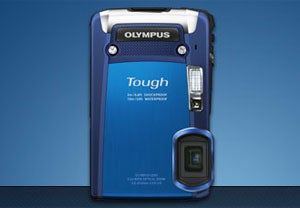 At first glance, the TG-820 doesn’t really look any tougher than a normal digital camera. But looks can be deceiving.
At first glance, the TG-820 doesn’t really look any tougher than a normal digital camera. But looks can be deceiving.From the outside, the 820 doesn’t exactly look the part. In fact, it looks much like many digital cameras, a fact that drew its share of strange looks when I stuck it below the water to get a shot during a group ride. Take a closer look, however, and you’ll see the water-related features engineered into the housing. The body is metal. Fact or fiction, it gives the camera a more durable feel than its plastic counterparts. The memory card, battery, and HDMI/USB connections are housed behind a door with a double-latch closure and thick rubber gasket. The former prevents you from accidentally opening the door, the latter seals out the moisture. (The only catch? I still can’t seem to remember the order in which to slide those latches.) Controls move with a dampened feel, the result of gaskets below to keep everything tight and dry.
The toughness comes at a price. Most notable is the lack of zoom range compared to similar, non-water-friendly counterparts. It’s a fact that plagues nearly all waterproof models. The 820’s optical zoom is only 5X, meaning I often couldn’t get as close as I wanted to the kids when wakeboarding or my buddy as he passed by for an action photo. Image quality, however, is surprisingly good. Sharp photos are captured at up to 12 megapixels. Olympus credits the backlit CMOS sensor and TruePic VI image processor. I’m not sure what all that means, except for the fact that it equates to sharp, bright looking pics in conditions that are often low-light (underwater) and challenging (that same buddy carving a high-speed turn while roosting some spray your way). I’ve dunked it in the Gulf of Mexico, northeastern lakes, and even the chlorinated waters of a waterpark, all with very good, often great, pictures as a result.
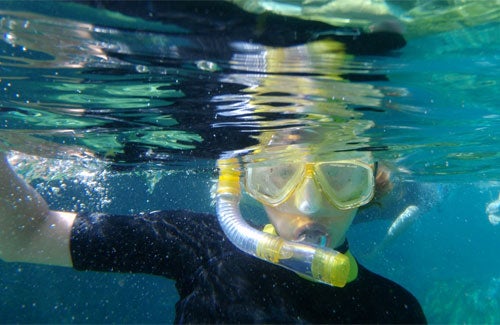 We took this underwater shot with our TG-820.
We took this underwater shot with our TG-820.Static pictures aren’t all it can do. The 820 can also capture video. Not the lousy stuff I expected, but full high-definition 1080 p at 30 frames per second. Stills and video can be reviewed on the bright, clear 3” LCD display on the camera’s back so that you can see what you’ve got on the spot. Later, download those pics and videos to a computer or show them on your flatscreen. One thing that was missing? GPS. A lot of tough models seem to feature it to location-stamp photos or see just where you are in the world. I didn’t miss it for a second.
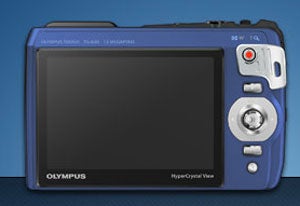 You can view all your photos and video on the three-inch LCD display.
You can view all your photos and video on the three-inch LCD display.Like most modern digital cameras, the 820 takes a lot of the guesswork out of shooting. Leave it in auto mode to let the camera do the thinking for you, or fine tune the settings for common scenarios – sport, indoor, sunset, underwater, fireworks, beach and snow. You can even get all pro photographer, snapping off a high-speed, five-frames-per-second burst to get the perfect action shot.
Navigating the menus that set all these scenes and settings up is often a pain when you’re sitting in the saddle of a PWC rocking on the water, or splashing in the pool. That’s why I like the “tap” feature. When activated, it allows you to navigate menus with taps on the camera body. It’s intuitive, meaning you tap top or bottom to go up or down in menus, tap left or right to go side to side. Neat.
One final selling point? Most of the cameras I tried lacked a lens cover. I often smeared a lens on the other cameras with a sunscreen-covered hand or found salt dried on the lens during extended time in the ocean. The Olympus, however, features a sliding lens cover that opened when I powered the camera on, and closed when I turned it off. It’s a seemingly simple addition, but one with very practical benefits.
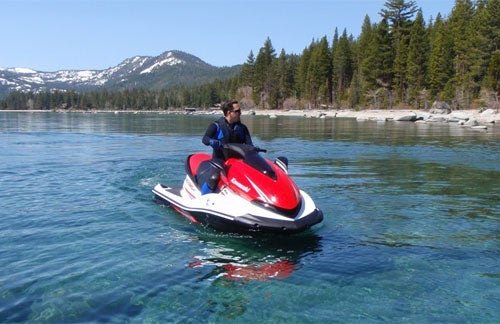 For a fairly inexpensive digital camera, the TG-820 takes impressive photos.
For a fairly inexpensive digital camera, the TG-820 takes impressive photos.Related Reading
Four Must-Have Products
Essential Summer Gear
Get PersonalWatercraft.com in your Inbox!
Like PersonalWatercraft.com on Facebook
Comments
Most Popular

2025 Yamaha JetBlaster PRO 2-Up Review

2024 Kawasaki Jet Ski STX 160X Review

Remembering the Sea-Doo XP

Whatever Happened to the Wetbike?

2025 Yamaha JetBlaster Review




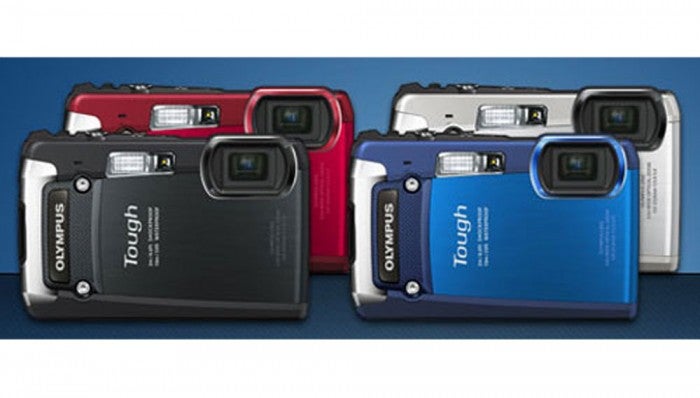

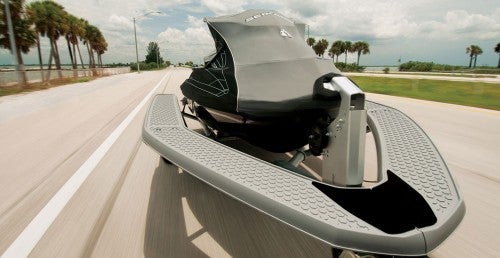
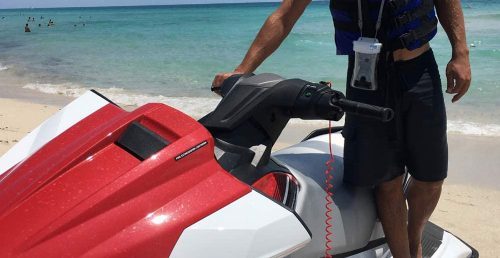






 Your Privacy Choices
Your Privacy Choices